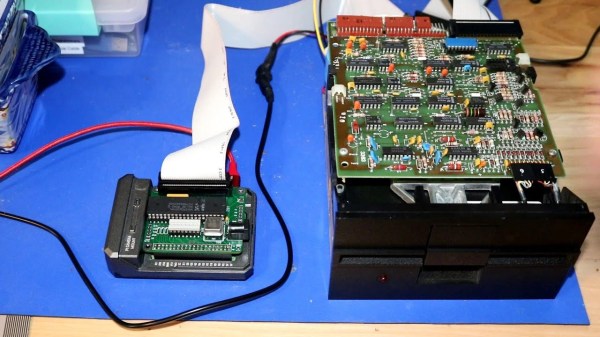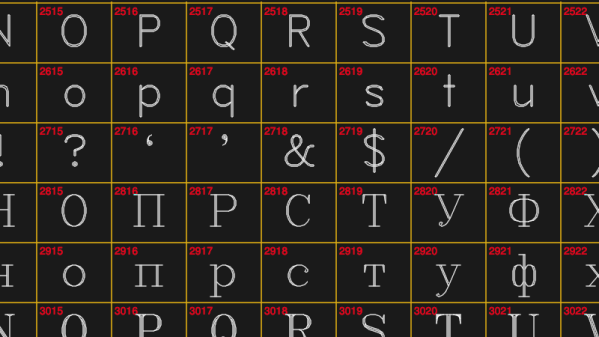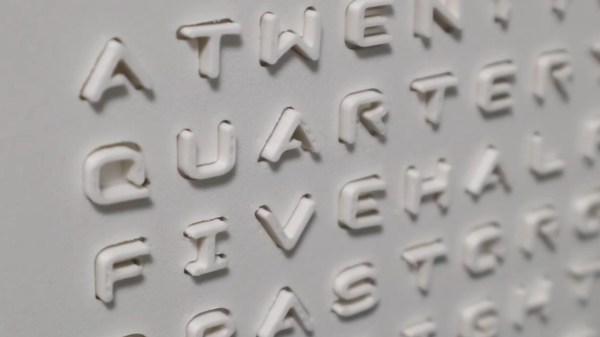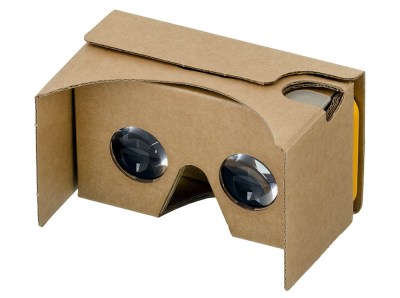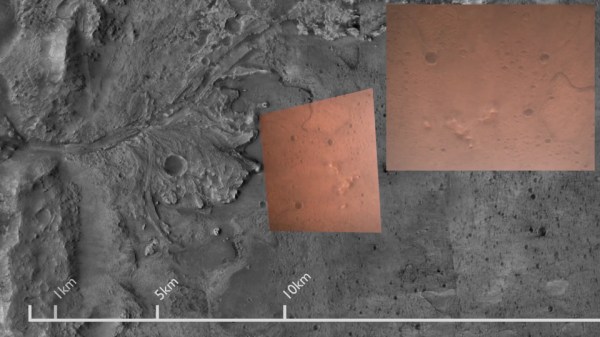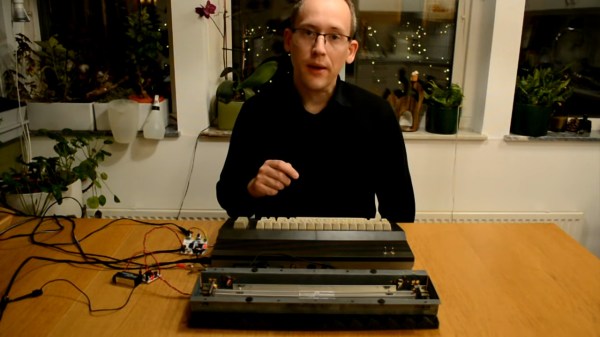The Raspberry Pi is the darling single board computer that is everything to everyone. It even has lit up the eyes of the older set with the Pi 400 mimicking the all-in-one keyboard computer design so popular in the 1980s. Another project that harkens back to that golden era is this Raspberry Pi floppy controller board from [Dr. Scott M. Baker].
[Scott] is no stranger to floppy controllers, having worked with the popular WD37C65 floppy controller IC before with the RC2014 homebrew Z80 computer. Thus, it was his part of choice when looking to implement a floppy interface on the Raspberry Pi. The job was straightforward, and done with just the IC itself. Despite the Pi running at 3.3 V and the controller at 5 V, [Scott] has found no problems thus far, implementing just a resistor pack to try and limit damage from the controller sending higher voltage signals back to the Pi. With that said, he plans to implement a proper level shifter down the road to ensure trouble-free operation long term.
The project is rounded out with a bunch of Python tools used to interface with the controller, available on Github. Performance is limited by the non-realtime nature of the Raspberry Pi’s user mode operation, which [Scott] notes could be fixed with a kernel module. With that said, if you’re looking for performance, floppies aren’t it anyway.
We do love the Pi put to use in retro tasks; it can even be a SCSI Swiss Army Knife if you need one. Video after the break.

